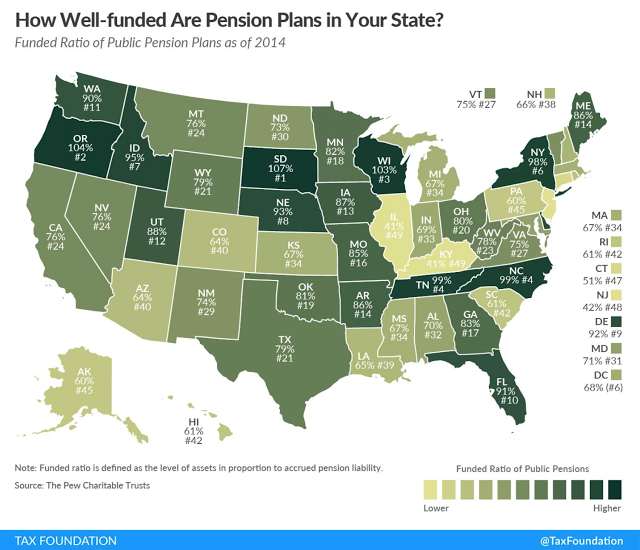The Tax Foundation map of state funding ratios for public pensions is very sobering. The amount of state under-funding is significant. These numbers are determined by the discounted expected liabilities relative to the assets held. To stay even with these ratios and assuming there is no surprise increase in liabilities, the states have to return the discount rate. These discount rates or expected returns seem unrealistically high.
A lower rate of return and the under-funding will get worse. If returns are higher, the gap will be closed, but a reasonable excess return of say two percent will still require years of good performance to eliminate the gap.
What is critical for the states is ensuring that downside risk is minimized given that any return shortfall will be needed to be offset with future higher returns in order to just get back to a prior funding ratio. In this sense, pensions do not need high returns with risk but more stable returns with lower downside. In simple terms, the underfunded pension should not go for broke in order to make up shortfalls.
If a state believes that the discount rates are too high perhaps for political reasons and equity valuations cannot be sustained then investments that provide crisis offset or have the ability to do better in bad times should be held. This should happen even if the crisis offset strategies have returned less than equities over the last few years. The past may not repeat and there should be less premium received for assets that are uncorrelated with the market portfolio and can do better during market downturns.

